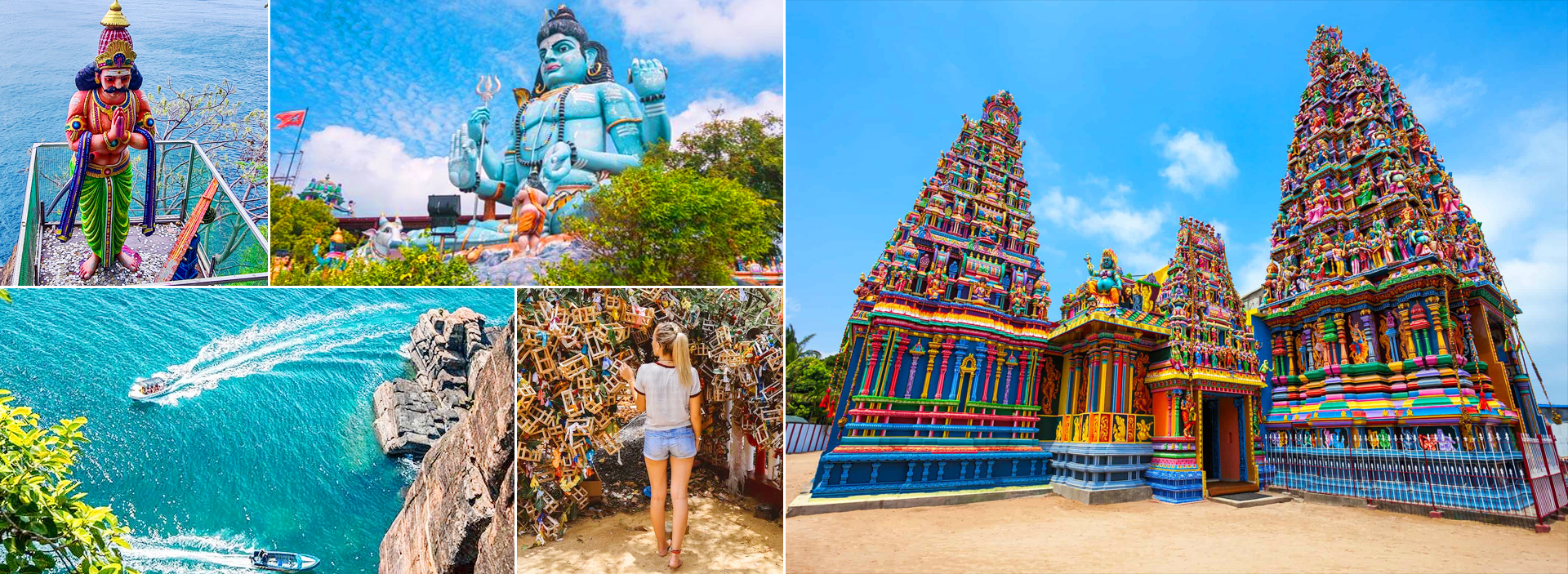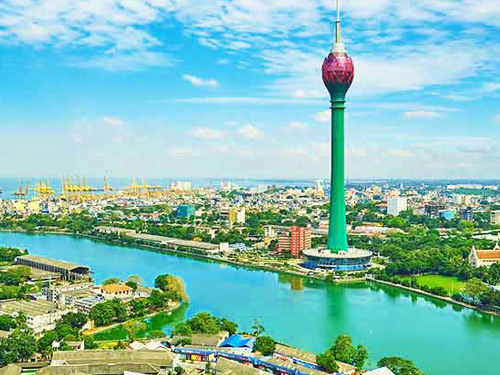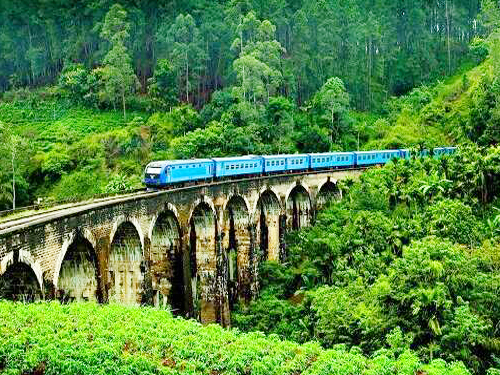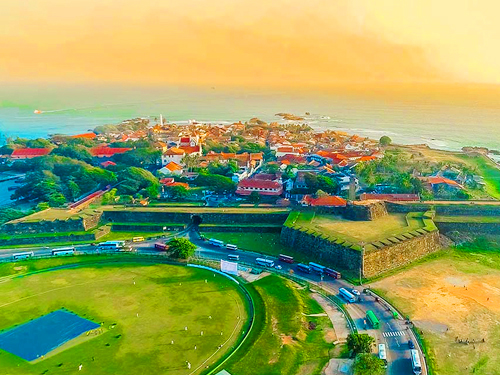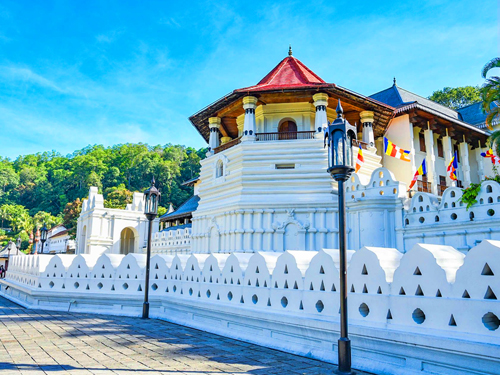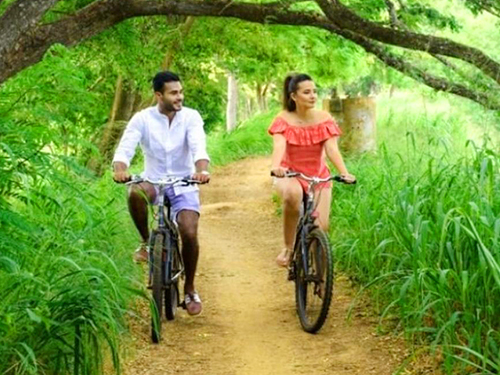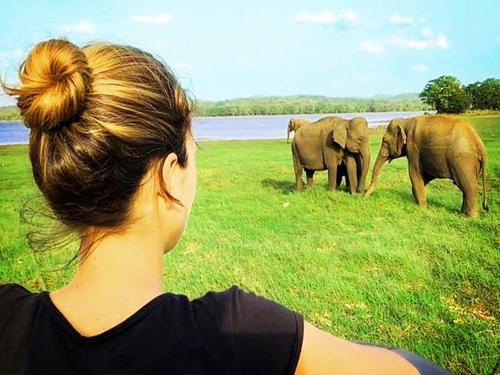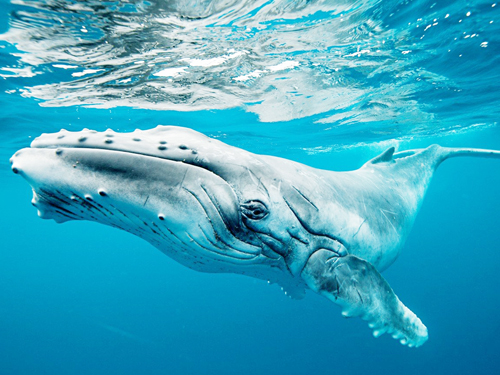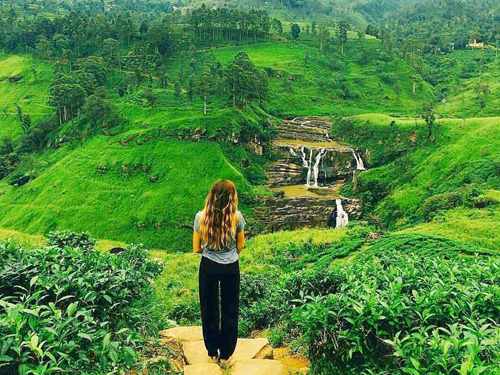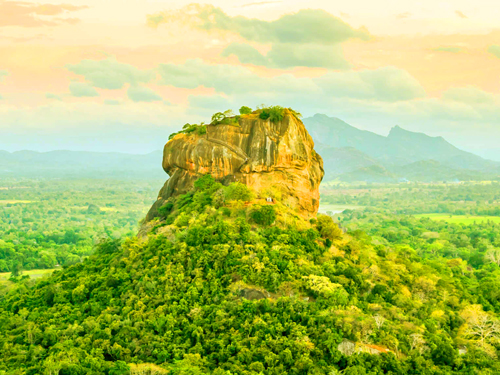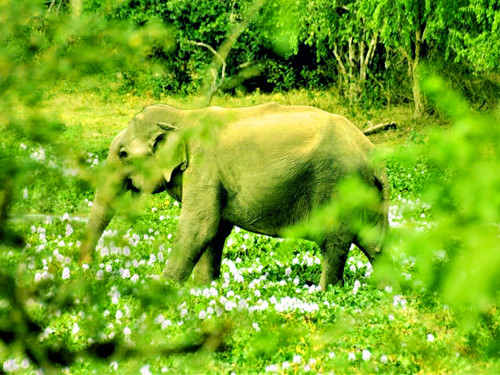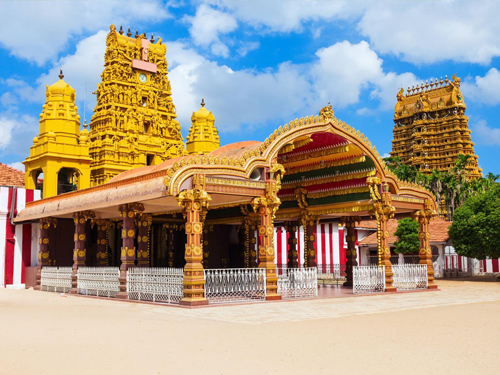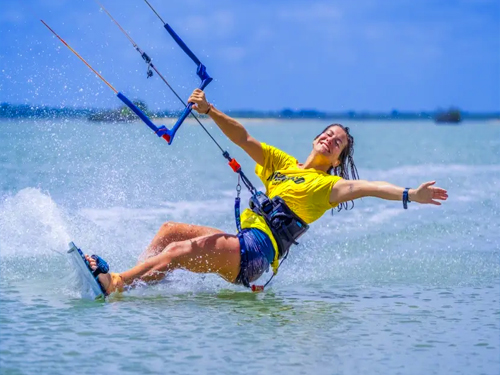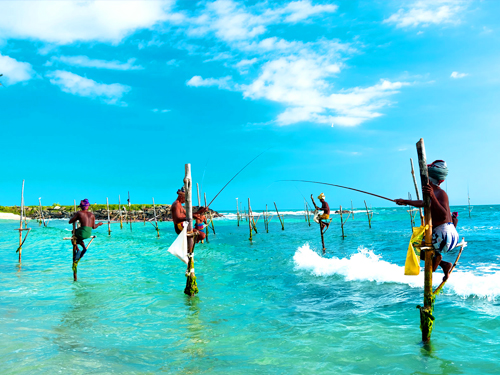Trincomalee in Sri Lanka
History of Trincomalee
Trincomalee, a natural deep-water harbor, has been attracting seafarers, traders, and pilgrims from Europe and the Middle East, Africa and China since ancient times. Trinco is a seaport that has existed since 400 BCE. Trincomalee's earliest epigraphic inscriptions are in Tamil. The oldest settlement on the island was the Tamil settlement at Trincomalee port. It dates back to around 900 to 1000 CE. This inscription, which belonged to the Chola Dynasty and is located near the first temple of the promontory, is also from a sluice.
It is called Gokarna by ancient texts and an inscription found among its Hindu archaeological remains by archeologists. Kulakkottan was a descendant of Ellalan, the ruler of Anuradhapura. He oversaw renovations to Hindu temples and also managed settlement of Tamils to ensure their maintenance. Since the Yakkha period, Sacrificial and other cult practices on the Trincomalee Promontory have been documented. They were observed during the reigns of Pandukabhaya of Anuradhapura (Maha Naga of Anuradhapura) and Manavanna of Anuradhapura (The Life of Alexander Alexander, 1830). According to Charles Pridham and Jonathan Forbes, Eiswara was the first form of worship for the island and deity worshipped by Kuveni, an ancient Yakkha queen. George Turnour and George Turnour believe that there is no other ancient form of worship than the Eiswara worship on his sacred promontory.
The first known literary mention of Siva temple is Mahabharata. It is a Hindu epic that was written between 400-100 BCE. The temple of Gokarna bay lies in the middle the ocean. It is also the island shrine to Uma's consort. All natives of the island, including the Nagas. Yakkhas. Siddhars. Devas. Peoples from the mountains, rivers, ocean, and subcontinents worship it. If one fasts there for three nights, it is possible to attain the merit of horse-sacrifice and the status Ganapatya. One's soul will be cleansed by staying twelve nights there. Mahabharata says that the shrine is the next stop for Hindus on their way south after Kanyakumari, the early Pandyan kingdom, and Tamraparni Island (Kudiramalai).
The Ramayana, written in the same period, describes King Ravana's devotion to Siva at the shrine. This was when he wanted to take down the Koneswaram temple because his mother was ill. The literature also states that Lord Siva forced the king to drop his sword while he was lifting the rock. This created a cleft on the rock that is now known as RavanaVettu, or Ravana's Cleft. Her final rites were performed in Trincomalee'sKanniya hot water springs at her home.
SiddharPatanjali, a Siva-worshipping Siva, was born at the city's center in 180 BCE. Its connections to another SiddharAgastya at least from the 5th-4th centuries BCE suggest that Yoga Sun Salutation originated at Trincomalee. Kankuveli, one of Trincomalee’s suburbs, is where you will find the ruins of the Tamil Sidhar medical school established by Agastya the "AgathiyarThapanam". This university, along with his other shrines at Sivan OliPadamMalai helped spread Tamraparniyan knowledge across the continent in the pre-classical period. The VayuPurana is a reference to the Siva temple at Trikuta on the eastern coast, Lanka. This was again mentioned in the 3rd Century CE Mahavamsa. King Vijaya brought Panduvasdeva with him to land at the bay in 4th Century BC.
According to the YalpanaVaipavaMaai, Vijaya rebuilt the Koneswaram temple as well as the four Eswarams after his arrival. According to the Mahavamsa as well as the later CulavamsaMahasena from Anuradhapura destroyed the Trincomaleedevalaya temple complex that housed Siva lingas and built a Mahayana Buddhist edifice. To appease the Anuradhapura MahaViharaya monks who had been antagonized himself by Mahasen, he destroyed the Hindu temple. Sangamitta, a Tamil Buddhist monk who came from the early Chola countries, was his mentor. He had intervened to end the persecution of Vetullavada devotees.
TamraparniyanAbhayagiri versus MahaViharaya sectarianism in Anuradhapura. This is what explains many of the Buddhist archeological finds in the area. Trincomalee bay was once again mentioned by SilakalaAmbosamanera, Anuradhapura's ruler, as the spot that must be protected from "the evil in Rohana". Trincomalee also has a reputation as a place of magic. There, Naga snakes appeared to foretell the consecrations of Maha Naga and Anuradhapura. The Siva temple was re-established on the promontory in the 6th century, shortly after the Pallava dynasty's rise. Trincomalee's sacred status is confirmed by the MattakallappuManmiyam in Batticaloa.
Geography
Trincomalee, located on the eastern coast of Sri Lanka, is a vibrant port city renowned for its stunning natural harbor and rich cultural history. Nestled along the Bay of Bengal, this picturesque town is part of the Eastern Province and lies approximately 257 kilometers northeast of Colombo. Its unique coastal geography makes it one of the finest natural deep-water harbors in the world, attracting maritime activity for centuries.
The city's coastline is adorned with pristine beaches, such as Nilaveli and Uppuveli, offering golden sands and turquoise waters. Offshore, the Pigeon Island National Park, a coral-rich marine sanctuary, enhances the area's ecological significance. The rugged cliffs and coves around the harbor provide breathtaking views and shelter to diverse marine life.
Inland, Trincomalee is surrounded by low-lying plains interspersed with lush greenery and mangrove forests. The region also includes iconic landmarks like the Swami Rock, home to the ancient Koneswaram Temple perched dramatically above the sea, and Fort Frederick, a remnant of colonial history.
With its tropical climate, Trincomalee boasts warm weather year-round, making it a haven for beachgoers, divers, and history enthusiasts alike. Its geographical diversity offers a perfect blend of natural beauty, ecological significance, and cultural depth.
Climate and Weather
Trincomalee, located on Sri Lanka’s eastern coast, experiences a tropical climate characterized by warm temperatures and distinct monsoon seasons. The city enjoys year-round sunshine, making it a popular destination for beachgoers and nature enthusiasts.
The average temperature in Trincomalee ranges between 26°C and 32°C, with the coastal breeze providing a refreshing balance to the warm days. The region’s dry season, from May to September, is ideal for outdoor activities like snorkeling, diving, and exploring the famous Nilaveli and Uppuveli beaches. During this period, clear skies and minimal rainfall make it the perfect time for marine adventures.
The wet season, influenced by the northeast monsoon, occurs from October to January. While the rains bring lush greenery to the area, they also result in occasional heavy downpours, especially in the evenings. Travelers during this time can still enjoy cultural and historical sites, such as the Koneswaram Temple and Fort Frederick.
March and April are considered transitional months, offering a blend of mild warmth and occasional rain. This diverse climate allows Trincomalee to cater to visitors seeking both relaxation and adventure throughout the year. Whether it’s the sunny beaches or the rejuvenating rains, Trincomalee’s weather enhances its charm.
Trincomalee’s Cuisine: A Taste of Sri Lanka's Northeast
Trincomalee, a coastal gem in Sri Lanka’s northeast, offers a culinary journey that reflects the region's vibrant culture and diverse influences. The cuisine here is heavily inspired by Tamil traditions, with a delightful mix of seafood, spices, and coconut-based dishes. Being a coastal city, Trincomalee is renowned for its fresh seafood. Dishes like crab curry, grilled prawns, and fish ambul thiyal (a tangy fish curry) are must-tries, showcasing the region’s expertise in seafood preparation.
Vegetarian dishes are also a highlight, thanks to the area’s strong Hindu influence. Traditional meals often include rice served with dhal curry, sambols, and a variety of spiced vegetables. Coconut sambol and pol roti are local favorites that pair perfectly with any meal.
Trincomalee’s street food scene is equally enticing. Savor snacks like vadai, samosas, and kottu roti while exploring bustling markets. Don’t miss trying palmyrah-based sweets and cooling beverages like toddy or fresh coconut water.
Dining in Trincomalee often comes with breathtaking ocean views, adding a touch of tranquility to the flavorful experience. For travelers seeking authentic Sri Lankan flavors, Trincomalee’s cuisine offers a delicious gateway into the heart of the island’s northeast culture.
Attraction Places of Trincomalee
One of the most popular attractions on the east coast in Sri Lanka is the Koneswaram Temple. It can be found in Trincomalee. You can see the stunning and inspiring scenery from all sides from the temple high above the bay. This site is known as the Kailasa in the South and is a sacred pilgrimage site for Hindus. One of five PanchaIshwarams (abodes of Shiva), the Koneswaram Temple was built to worship Lord Shiva, the supreme God in Hinduism.
The original construction of this temple dates back to 400 B.C.E. Later, it was built in the 5th century, and then finally in the 18th century. It was considered one of the oldest combinations of architecture and ornamentation. Beautiful features included a thousand-pillared hall and raised platform, which were later destroyed. Koneswaram is named after the chief deity of Koneswaram, God Shiva. He is also known for being someone who rules over the mountains. According to the Old Tamil word for "peak", Konam is believed to be the source of its name.
Many of the original pieces were reinstalled and the restoration of the temple was complete by 1963. Although the temple is not as grand as it was in ancient times, it remains a popular place to visit for Hindus and non-Hindus. Pilgrims will begin their journey at Konesar Road. They then follow a path through the courtyard shrines to the deities Surya and Shiva, who are at the peninsula's highest point.
Uppuveli Beach, located in Trincomalee district, is a popular tourist spot. There are many local options for food, including seafood. Since the Tsunami disaster in 2004, the beach has seen a decline in tourism. These waters are still ideal for waterskiing and wakeboarding.
The Fort Frederick, a beautiful fortress built by the Portuguese in 17th-century Trincomalee, was completed by 1624. It has a unique appeal because it was built on Swami Rock-Konamamala, the remains of the Hindu Koneswaram temple and is also known as the temple of a thousand columns.
While the Fort is currently operated by the Sri Lankan Army, it also serves as a tourist attraction that draws people because of its historical value. You can either explore the Fort by foot or rent a tuktuk. You will also find the Wellesley Lodge and the Gokana Temple within the Fort. The Fort offers a unique heritage experience that you will never forget.
The Pathirakali Amman Temple, a Hindu temple dedicated to goddess Kali that is located in Trincomalee in Sri Lanka's eastern province is called Kali Amman Temple. It is constructed in the classic Dravidian style, which is very similar to South Indian temple styles. Beautiful sculptures and a stunning interior design make the temple stand out. The statues also have a description of the temple and many stories.
The Pathirakali Amman Temple forms part of the Temple Complex of the TrincomaleeKoneswaram Temple Compound.
This stretch of beach is located 16 km north of Trincomalle. It passes a lush lagoon on one side, and coconut palm groves on the other. There are also hordes cattle. Note that the local people are predominantly Hindus who consider the cows sacred. You will arrive at Errakkandy, a small hamlet, and take a sharp right to Nilaweli beach. This is a nearly kilometre long, white sandy beach with gentle waves. Two kilometres from the ocean is the famous pigeon Island. This island was named after the rock pigeons that roost on it. The water around it is crystal clear and allows you to snorkel to the depths of the reef. Further north, you'll see reddish rocks that are known as the red rock beach.
You can stroll along the Nilaveli Beach's golden sand and azure water for over a kilometre to enjoy the beautiful country while also taking part in exciting water sports. This beach is renowned for its popularity as a place to go scuba diving and snorkelling, fish, and swim. You can also take a boat ride to Pigeon Island National Park, which is just a few minutes away. It is possible to immerse yourself into the unique and endemic marine wildlife on the island.
Nilaveli's summer temperatures are highest in May, June, and July. Summer temperatures range between 26 and 36 degrees Celsius. The nights are cool and the days are long, just like any other coast. November through May are the best months for Nilaveli. August is a popular time to visit. It's also a great time to get a tan from January to May. You will need to hydrate yourself frequently due to the humidity. Nilaveli has coconut water, which is the best source. Even during the hottest days, you will feel cool and relaxed with this coastal goodness. It is a great place to relax and enjoy the vibrant marine life. You will find sharks, turtles, and urchins in the waters. Festivals of all religions light up the land. Here, Diwali, Christmas and Ramadan are celebrated with great pomp.
The attractive Dutch Bay Beach is located in the middle of Trincomalee. It has a beautiful stretch of golden sand and turquoise waters that stretches for several kilometres. You can run, walk, or take a dip in the ocean as the local fishing boats wait for you to get into them.
Trincomalee British War Cemetery is one of six Commonwealth war cemeteries in Sri Lanka. It contains gravestones for more than 300 soldiers. Many of those who lost their lives during the Japanese attack on Trincomalee's port in 1942 are buried in the cemetery. The cemetery is green and has trees around it, which allows you to reflect on the many deaths it represents.
Swami Rock, also known as Lovers' Leap is located in Trincomalee. It is most famous for its KoneswaramKovil (a prominent Hindu temple in the country) which is perched atop. It was destroyed by the Portuguese in 17th century, but it was rebuilt three centuries later. Blue whales are its most famous feature.Swami Rock is an excellent spot to dive, due to its stunning coral and marine life. It is also a great spot to spot blue whales. Swami Rock is best visited between May and August for better underwater visibility and frequent sightings.
Marble beach is one the most beautiful beaches on the Sri Lankan east Coast. This beach of white sand is a popular spot for solo travel. The beach offers many activities and a variety of open restaurants. The beach also has a small island that is home to endemic mammal and bird species. There is also a parking spot at the beach.
The Kanniya hot springs are located on the east coast Sri Lanka's in Trincomalee. It consists of seven wells that have a square shape and each have a depth of approximately four feet. Although the temperature of these hot springs can vary between wells due to variations in temperature, the average temperature is warm-to-hot. The hot springs represent nature at its purest. The water from these wells is thought to have healing properties. Each well has water that is only a few inches deep. One can even see the bottom. The well's depth is so great that you can draw 10-15 buckets of water from it.
Legends of the Kanniya hot springs date back to Sri Lanka's ruler Ravana more than 5000years ago. The belief is that he raised his sword to anger in various parts of the Earth, which later led to the formation of the hot springs. After his mother, the hot springs are named 'Kanniya. The Buddhists considered the wells an ancient source of purification and cleaning. In collaboration with the Sri Lankan military, the Mari Amman Kovil maintains the wells.
Arisimale Beach, located just outside of Trincomalee is one of the most popular beaches in the area. The beach is small but beautiful. It is surrounded by greenery and mountains. The beach is a great spot to watch sunsets and offers a variety of food options. The place is also home to a Navy camp. There is also a parking spot nearby.
Trincomalee beach, one of the most stunning beaches in Sri Lanka, is located in Trincomalee town. The beach is located in Trincomalee, and is well-known for its cleanliness, beauty, and hygiene. Trincomalee beach offers many food and beverage options. It is also a great spot to see fishermen at work. Boat riding is also an option.
Coral Cove Beach, located near Ostenburg Point is one of the most beautiful, peaceful, and family-friendly beaches of Trincomalee. Named for its spectacular reefs that are home to many marine species, including anemones, nudibranchs, and colourful fish, the beach is also known as Coral Cove Beach. This area of Trincomalee has a reputation for its light swimming and authentic crab curry. However, snorkelling can be dangerous due to strong undertows.
Sandy Cove Beach, surrounded by a lush reef off the coast, is a great spot for snorkellers. This family-friendly beach is just a stone's throw from Rocky Point. It offers forested hills to climb, street vendors selling delicious street food, and cottages on the beach for rent. It is popular with locals, who rent inflatable toys to play in the surf and also rent them out on weekends.
Enjoy the tranquility of the public beach of Trincomalee, Uppuveli’s quieter cousin. The 400-year-old Dutch Fort Frederick can be seen from Public Beach. This bay is ideal for long walks, picnics and sunbathing. You can also enjoy watching the fishermen bring in their catch against beautiful sunset backdrops.
Things to do in Trincomalee
Snorkeling at Pigeon Island
Pigeon Island, named after the rock-pigeons who use it as a breeding area, is one of Sri Lanka’s most popular marine parks. It is home to many coral and fish species making it a great spot for snorkelling. The island is also home to the Hawksbill Turtle and Green Turtle as well as the Blacktip Reef Shark. Visitors can also see the rock pigeons flitting out of the rocks around the island, along with rich underwater life.
Scuba Diving in Trincomalee
Divers of all levels will find something at Trincomalee, with many locations throughout the city. Swami Rock is ideal for drift diving. The wreckage of H.M.S. Diomede, and H.M.S. are two of the many divers who love exploring. Trincomalee is home to many species of fish, including octopi and nudibranchs.
Whale Watching
Trincomalee is great for diving, but also for seeing whales and other marine life in the Indian Ocean. Blue whales are most common between May and October. The best time to spot them is July. Tourists may also see sperm whales in this area. If tourists are able to find a guide, they can also dive with and swim with whales.
Hiking Diamond Hills
Diamond Hill is a reminder that the Second World War was fought. It has remnants of a signal tower, a bunker and other evidence of life in the harbour during the 1940s. These sights can be accessed by hiking up the hill, which was named by the British. The climb up the hill is easy with only rocks or trees supporting you. The summit offers a spectacular view of Trincomalee Bay. It also includes all the bay's hidden coves and the Prima flour factory.
How to reach Trincomalee
The tranquil town of Trincomalee, on the eastern coast of Sri Lanka is another popular tourist destination. Trincomalee, known for its white-sand beaches and other tourist attractions, is a perfect place to spend a two-to three-day trip. You can travel from Colombo by bus, car, or train. Trains are the most popular mode of transport due to their affordability and ease of availability.

 Safe Travels
Safe Travels Français
Français Deutsch
Deutsch עִברִית
עִברִית Italiano
Italiano Nederlands
Nederlands Polski
Polski Pусский
Pусский Español
Español